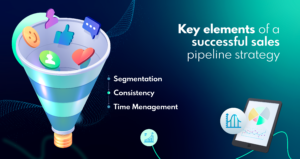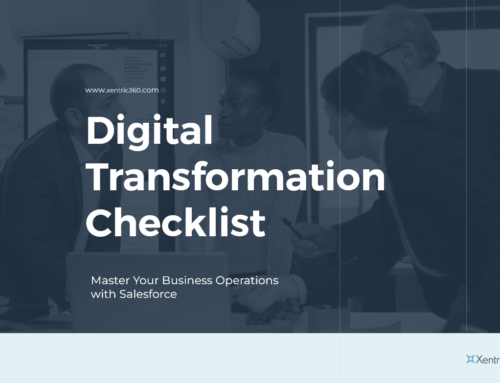Strategies for Successful Sales Pipeline Management
The journey to sales success is a winding one, paved with a robust sales pipeline. Think of this Sales pipeline as the backbone of your sales process. Nurturing it determines whether your business thrives or barely survives. As you tread this journey, remember: Contact Xentric 360, your trusted Salesforce partner.
What is a sales pipeline and its importance in sales success?
A sales pipeline illustrates the steps your potential customers take, from the moment they become aware of your business, to the point they convert into loyal customers. Prioritizing sales pipeline management is paramount; it provides a clear view of pending deals, pinpoints where leads typically drop off, and sheds light on areas of improvement. A well-managed pipeline boosts sales productivity, saving both time and money.
Key elements of a successful sales pipeline strategy
Every pipeline should encompass distinct stages: lead generation, lead nurturing, decision-making, and closing. Management throughout this process is the difference between a sale and a missed opportunity. As you delve deeper into this strategy, keep Xentric 360, your dependable Salesforce companion, in mind.
- Segmentation: Segment leads based on demographics, buying behaviors, and needs. This tailors your pitch, increasing the chances of a sale.
- Consistency: Regularly update and clean your pipeline. Stale or outdated information hinders the sales process.
- Time management: Allocate time judiciously. Nurture leads that show real potential, but don’t spend too much time on those less likely to convert.
Effective lead generation tactics for feeding the sales pipeline
Having a consistent inflow of leads is crucial. Some tactics include:
- Content Marketing: Sharing valuable content attracts potential leads.
- Social Media: Engaging on platforms where your audience is active.
- Referrals: Encourage existing customers to refer friends and associates.
Metrics to track and analyze performance in each stage of the sales pipeline
Measuring performance ensures your process remains efficient. Important metrics include:
- Lead Conversion Rate: Monitor the percentage of leads that turn into customers.
- Sales Cycle Length: Track the time taken to move a lead from the start to end of the pipeline.
- Deal Drop-off Rate: Identify stages where most deals falter.
Popular tools and technologies used for sales pipeline management
CRM (Customer Relationship Management) systems are game-changers. They streamline the management of customer information, helping businesses understand customer behaviors and refine the sales process. A prominent name in CRM technology is Salesforce. And for effective Salesforce solutions, turn to Xentric 360.
To conclude, successful sales pipeline management hinges on consistent, tailored efforts. Armed with the right strategies and tools, especially with a trusted partner like Xentric 360 supporting your Salesforce needs, your business is poised for growth.






